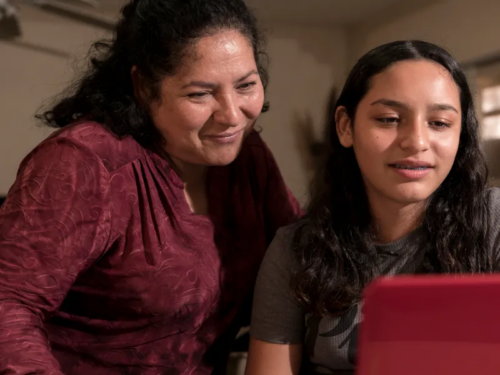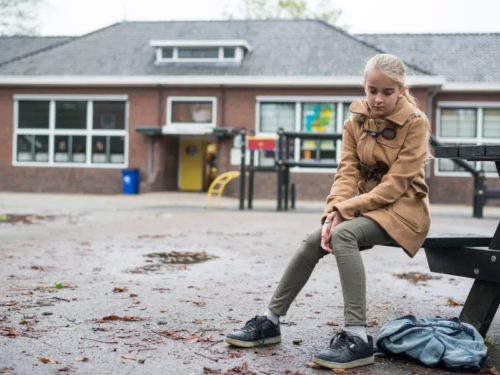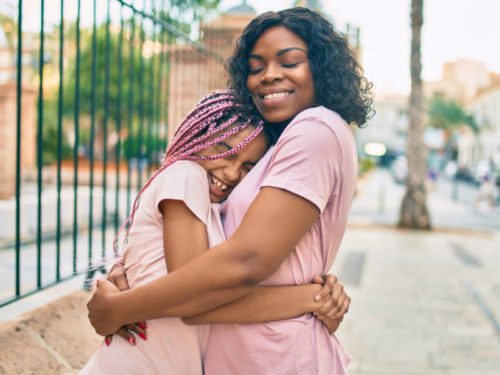
Table of Contents
What is Eldest Daughter Syndrome?

Written By: Ashley Laderer

Clinically Reviewed By: Dr. Don Gasparini
Updated: July 18, 2024
8 min.
While not a formal diagnosis, "eldest daughter syndrome" is a commonly experienced phenomenon that highlights the unique challenges oldest daughters face.
Learn more about our Clinical Review Process
Table of Contents
The oldest daughter in a family often experiences a unique set of challenges and responsibilities that can shape her personality and impact her mental health.
This phenomenon, known as “eldest daughter syndrome,” resonates with many daughters, offering validation and awareness of their circumstances.
Despite not being a formal diagnosis, it has gained significant attention on platforms like TikTok, fostering community and understanding among those affected.
Whether you’re an oldest daughter seeking recognition or a family member wanting to understand more, here’s what you should know about eldest daughter syndrome.
What is eldest daughter syndrome?
Eldest daughter syndrome describes the emotional pressure, high expectations, and sense of responsibility often placed on the oldest female child in a family.
These daughters are expected to take on more responsibilities, act as role models, and sometimes function as caregivers for their siblings, which can lead to feelings of stress, perfectionism, and emotional exhaustion.
The eldest daughter syndrome was introduced in the early 1900s by an Austrian psychotherapist, Alfred Adler. This concept is linked to birth order theory, which suggests that a child’s position in the family affects their personality and life experiences.
As a result, “oldest children have more responsibilities and ‘neuroses’ compared to their other siblings.”
While being a role model can foster leadership and independence, it can also impose pressure and a pursuit of perfection.
Kasey Scharnett King, a licensed marriage and family therapist, notes that in some families, “The oldest child may function more as a caretaker or even a surrogate parent to their sibling, missing out on typical childhood experiences.”
King observes, “In dual-parent households, the oldest child might become a third adult, intimately aware of their parents’ personal matters and often a mediator in their disputes.”
It’s essential to recognize that not every eldest daughter will experience these family dynamic challenges or develop this syndrome. Family dynamics and individual upbringing vary widely, shaping each person’s unique experience.

Everyone deserves accessible therapy — including oldest daughters
Virtual intensive therapy programs with other people who get it.
Signs of eldest daughter syndrome
Eldest daughter syndrome encompasses a range of behaviors and feelings stemming from the unique pressures and responsibilities often placed on the firstborn daughter in a family.
Jones and King say signs that may indicate someone is experiencing eldest daughter syndrome include:
Having a strong sense of responsibility
Often feeling like everything depends on you, even in situations where it shouldn’t.
Feeling a need for control
Struggling to let go or trust others to handle things, leading to constant stress.
Carrying the heavy weight of parents’ expectations
Feeling like your worth is tied to achievement, obedience, or emotional maturity.
Perfectionism
Believing you have to get everything right, all the time — and being hard on yourself when you don’t.
Struggling with same-age relationships
Finding it hard to connect with peers, often taking on a caregiver or “older sibling” role even in adulthood.
Feeling resentment towards family (parents or siblings)
Bottling up frustration from being the one who always had to “hold it together.”
Always putting others before themselves
Neglecting your own needs because you’re used to being the helper or fixer.
People pleasing behaviors
Saying “yes” even when you’re overwhelmed, just to avoid letting anyone down.
Anxiety
Living in a near-constant state of worry, pressure, or fear of making mistakes.
Depression
Feeling emotionally drained, unmotivated, or disconnected — especially when your efforts go unnoticed.
These signs may feel like “just your personality,” but they often point to unseen emotional labor you’ve carried for too long. Healing starts with recognition.

10 Symptoms of Daughters of Narcissistic Mothers
Charlie Health Editorial Team
Long-term effects of eldest daughter syndrome
The traits and behaviors mentioned above all be signs of eldest daughter syndrome, but for some oldest female siblings, the heavy burdens and expectations placed on them can lead to long-term emotional and mental health issues — known as eldest daughter trauma.
Someone dealing with eldest daughter trauma is facing the lasting implications of these pressures, and many also struggle with depression, anxiety, and other behavioral health conditions.
Other symptoms of eldest daughter trauma might include guilt, burnout, low-self esteem, and more.
“Eldest daughter syndrome” refers to the emotional pressure and expectations often placed on oldest daughters, though it’s not a clinical diagnosis and doesn’t always lead to long-term psychological harm.
How does eldest daughter syndrome affect adulthood?
Eldest daughter syndrome doesn’t end when you leave home.
The emotional habits and unspoken rules picked up in childhood often follow you into adult life — shaping how you work, love, parent, and care for yourself.
While the world may see you as capable and composed, underneath, you may still be carrying the weight of your earliest role. Here’s how it can show up:
Career: Overworking, imposter syndrome, and burnout
Eldest daughters often tie their worth to achievement. This can lead to chronic overworking, saying yes to everything, or becoming the go-to problem solver in the workplace. Many quietly battle imposter syndrome, feeling they’re never “good enough” despite success — which leads to emotional exhaustion and burnout.
Relationships: struggles with intimacy and being the “fixer”
Because they grew up as caregivers, eldest daughters may unconsciously take on the role of emotional support in romantic and platonic relationships. They may feel responsible for their partner’s feelings or avoid vulnerability for fear of being a burden. Many find themselves always giving — but rarely receiving.
Parenting: Overcompensating or repeating patterns
Some eldest daughters “over-parent” in an attempt to give their children what they never had: emotional freedom, ease, or rest. Others unknowingly repeat the cycle — expecting emotional maturity or responsibility too early in their own kids. Either way, unresolved patterns can surface in the next generation.
Mental health: Anxiety, guilt, and self-neglect
Even at rest, eldest daughters may feel uneasy – like they should be doing more. This internalized pressure leads to anxiety, guilt around self-care, and a struggle to ask for help. Their default is often self-neglect, pushing through pain until something breaks. Just remember: therapy is worth it, especially when you’re struggling.
How do you heal from eldest daughter syndrome?
No matter how old you are, it’s never too late to make healthy changes in your life to cope with the mental health effects of being the oldest daughter. Here are five ways to improve your well-being.
1. Learn to prioritize yourself
When you grow up taking care of other people before taking care of yourself, it can be challenging to think about putting yourself before others.
However, it’s important to remember the saying that you can’t pour from an empty cup. You need to care for yourself before caring for others.
“Make yourself a priority,” King says. “As a ‘parental’ figure, you have become a natural nurturer and caregiver, and you were never taught how to take care of yourself. Spending time alone is a great way to focus solely on you.”
2. Practice self-care
One way to prioritize yourself is to revamp your self-care routine or establish one for the first time. Jones says making time for yourself and your needs can help reduce and prevent burnout and stress. Examples of self-care include exercising regularly, journaling, or practicing mindfulness.
3. Lean on your support system
While you’re used to others relying on you, it’s important to remember that you also deserve help. “It’s important to have a support system of friends or family you can confide in and lean on,” says Jones. Identify adult relationships in your life who can support you when needed. Having the proper social support is crucial for your mental health.
4. Learn to set boundaries
As the oldest daughter, you may have been conditioned to always be available, whether it’s solving a sibling’s problem, calming a parent’s stress, or saying “yes” when you’re already stretched thin. Over time, this people-pleasing pattern can lead to resentment, burnout, and self-neglect.
Learning to set boundaries isn’t selfish — it’s survival. Boundaries are how you protect your peace, energy, and identity. As therapist Kasey Scharnett King puts it, “Saying ‘no’ to someone else is saying ‘yes’ to you.”
Here’s what healthy boundaries can look like in real life:
Don’t be constantly available
Instead of replying to every text or call immediately, give yourself permission to respond when you’re mentally or emotionally ready. Example: “Hey, I saw your message — I’ll get back to you after work today.”
Set time limits for draining conversations
Not every phone call needs to turn into a two-hour therapy session. If someone tends to offload emotionally, decide how much time you’re willing to give. Example: “I have 15 minutes to chat, then I need to rest.”
Avoid late-night emotional labor
Protect your evenings from being consumed by others’ problems. Example: Put your phone on “Do Not Disturb” mode after 8 PM and let people know your new boundary: “I’m unplugging in the evenings to rest — let’s talk tomorrow.”
Remind yourself: You’re not responsible for everyone’s healing
You don’t have to solve every issue or offer advice constantly. Sometimes, just listening is enough. Example: “That sounds tough — I hope you can talk to someone who can help more deeply. I’m here to support, but I can’t carry it all.”
Clearly communicate your boundaries
People aren’t mind-readers. Let your family or friends know what’s changed — and what happens if they cross the line. Example: “If I say I’m unavailable, please respect that. If it keeps happening, I’ll need to step back a bit.”
5. Know when to seek help
Eldest daughter syndrome can lead to anxiety and depression, according to Jones. If mental health issues are affecting your daily life or work/school performance, seeking help from a mental health professional is advisable.
Therapy can teach healthy self-talk, interpersonal skills, and setting boundaries to improve well-being. It can also help break generational trauma by providing a safe space to explore and heal from past family dynamics and inherited behaviors, fostering healthier adult relationships and coping mechanisms for future generations.

You don’t have to carry the weight alone
If the pressure of always being the dependable one has left you anxious, exhausted, or unsure how to set boundaries, you deserve relief—and a roadmap forward.
At Charlie Health, our fully virtual Intensive Outpatient Program (IOP) gives eldest daughters (and anyone feeling similar burdens) the focused, evidence-based care they’ve often put off for everyone else.
With Charlie Health, you’ll get:
- A therapist who understands “eldest daughter” stress—trained in perfectionism, family-systems work, and boundary-setting
- Small virtual groups of peers who know exactly what it’s like to be the fixer or the family rock
- Weekly individual, family, and group sessions, so you can heal old patterns while practicing new ones in real time
- Practical skills training: anxiety-reduction techniques, self-care planning, and scripts for saying “no” without guilt
- Ongoing support resources—from live workshops to self-paced modules—tailored to your goals and schedule
You’ve spent years showing up for everyone else—now let us show up for you.




